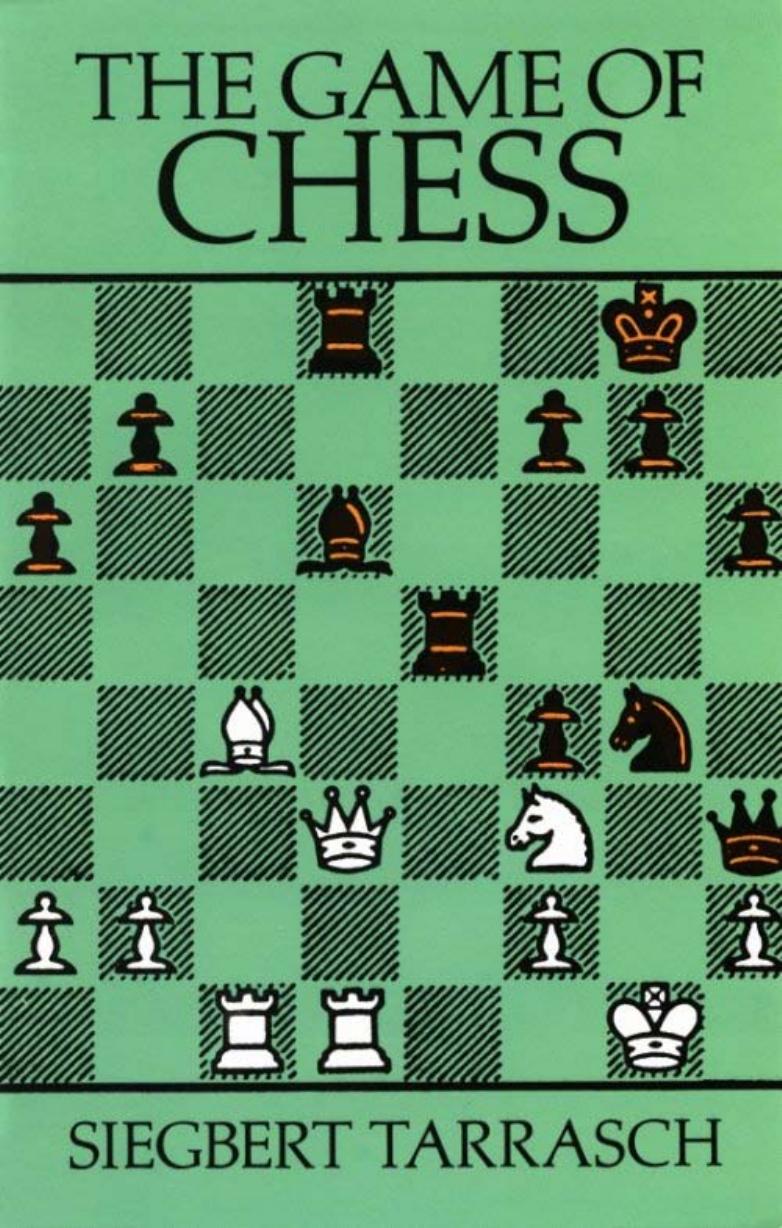The Game of Chess by Siegbert Tarrasch

Author:Siegbert Tarrasch [Tarrasch, Siegbert]
Language: eng
Format: epub, pdf
ISBN: 9780486144559
Publisher: Dover Publications
Published: 2012-10-12T04:00:00+00:00
TIME
Always make the best possible use of the right to move. You must not lose a single move. This Black would do, if, to give an absurd example, in reply to 1. P – K4, Kt – QB3; 2. P – Q4 he were to play 2.... Kt – Ktl . He would thus have lost two tempi. The fault is never quite as glaring as that in actual play, but is often very similar. It would be as bad if, instead of the Knight’s moves, Black played P – QR3 and P – KR3. Actually then, there would have been no loss of tempo, since the two moves with the Rooks’ pawns are visible on the board; and have not vanished, are not lost as were the two Knight moves. However, for the purpose of the present phase of the game, for any real significance in the Opening, these pawn moves are as good as useless, and can therefore be written off as loss of tempo. That is to say, they do not contribute in any way to the development of the pieces, the real aim of the Opening. In the Opening every tempo must, whenever possible, be utilised for development, so that the essential pawns are moved with all speed, and the minor pieces developed. At the same time every care must be taken not to develop one’s opponent, for by so doing one presents him with one or more tempi. Just as in respect of Force, and Space, so also in respect of Time, we must attempt to maintain a balance, and, whenever possible, to gain a superiority. To gain tempi or to force one’s opponent to lose them is the ideal to be aimed at. A few examples will make clearer this point, over which some quite good players are occasionally uncertain.
After 1. P – K4, P – K4; 2. Kt – KB3, Kt – QB3; 3. P – Q4, P × P (the Scotch Game); 4. Kt × P, the move 4.... Kt × Kt is analysed in some chess manuals. This move should never even come under consideration for it develops not Black but White, who, after 5. Q × Kt, has a splendid game. Black, as a result of the faulty exchange of Knights, has actually presented him with a tempo. Let us count the moves in development which are visible on the board. There are three for White, the two pawn moves and the Queen move. On the other hand, Black has made but one move, that with his King’s pawn, and since it is his turn to play, he can make the second move in his development. But of the third, to which he was just as much entitled as White, he has deprived himself.
After the moves 1. P – K4, P – Q4 (the Centre Counter Game); 2. P × P, Q × P, it has always been pointed out that Black, after 3. Kt – QB3, loses a tempo. That is a quite mistaken conception.
Download
This site does not store any files on its server. We only index and link to content provided by other sites. Please contact the content providers to delete copyright contents if any and email us, we'll remove relevant links or contents immediately.
| Coloring Books for Grown-Ups | Humor |
| Movies | Performing Arts |
| Pop Culture | Puzzles & Games |
| Radio | Sheet Music & Scores |
| Television | Trivia & Fun Facts |
The Infinite Retina by Robert Scoble Irena Cronin(6164)
Harry Potter and the Cursed Child: The Journey by Harry Potter Theatrical Productions(4440)
The Sports Rules Book by Human Kinetics(4290)
Molly's Game: From Hollywood's Elite to Wall Street's Billionaire Boys Club, My High-Stakes Adventure in the World of Underground Poker by Molly Bloom(3485)
A Knight of the Seven Kingdoms by George R R Martin(3191)
Quidditch Through the Ages by J.K. Rowling(3064)
How To by Randall Munroe(3033)
Flowers For Algernon by Daniel Keyes(3021)
Quidditch Through the Ages by J K Rowling & Kennilworthy Whisp(2930)
Quidditch Through the Ages by Kennilworthy Whisp by J.K. Rowling(2813)
Stacked Decks by The Rotenberg Collection(2811)
Quidditch through the Ages by J. K. Rowling(2768)
Quidditch Through The Ages by J. K. Rowling(2730)
776 Stupidest Things Ever Said by Ross Petras(2695)
Ready Player One: A Novel by Ernest Cline(2650)
What If?: Serious Scientific Answers to Absurd Hypothetical Questions by Randall Munroe(2637)
Beautiful Oblivion by Jamie McGuire(2569)
The Book of Questions: Revised and Updated by Gregory Stock Ph.d(2518)
Champions of Illusion by Susana Martinez-Conde & Stephen Macknik(2414)
